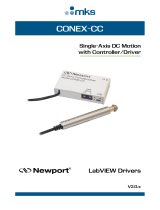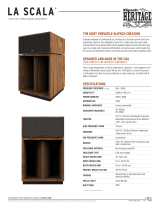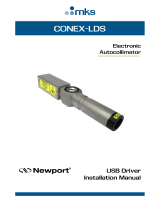TOA TU-660 Quick start guide
- Category
- Loudspeakers
- Type
- Quick start guide
This manual is also suitable for
TOA TU-660M is a high-power compression driver designed for use in public address systems, offering exceptional sound quality and long-distance projection. It features a newly developed ring-type diaphragm made of polyimide, which improves high-frequency response and reduces divided vibrations for clearer sound. With a power handling capacity of 60W and a frequency range of 500Hz to 8kHz, the TU-660M delivers powerful and intelligible audio for a variety of applications, including outdoor announcements, sports venues, and industrial facilities.
TOA TU-660M is a high-power compression driver designed for use in public address systems, offering exceptional sound quality and long-distance projection. It features a newly developed ring-type diaphragm made of polyimide, which improves high-frequency response and reduces divided vibrations for clearer sound. With a power handling capacity of 60W and a frequency range of 500Hz to 8kHz, the TU-660M delivers powerful and intelligible audio for a variety of applications, including outdoor announcements, sports venues, and industrial facilities.








-
 1
1
-
 2
2
-
 3
3
-
 4
4
-
 5
5
-
 6
6
-
 7
7
-
 8
8
TOA TU-660 Quick start guide
- Category
- Loudspeakers
- Type
- Quick start guide
- This manual is also suitable for
TOA TU-660M is a high-power compression driver designed for use in public address systems, offering exceptional sound quality and long-distance projection. It features a newly developed ring-type diaphragm made of polyimide, which improves high-frequency response and reduces divided vibrations for clearer sound. With a power handling capacity of 60W and a frequency range of 500Hz to 8kHz, the TU-660M delivers powerful and intelligible audio for a variety of applications, including outdoor announcements, sports venues, and industrial facilities.
Ask a question and I''ll find the answer in the document
Finding information in a document is now easier with AI
Related papers
Other documents
-
 Newport CONEX-CC User manual
Newport CONEX-CC User manual
-
Optimus SC-651 User manual
-
 Klipsch Heritage La Scala AL5 Product information
Klipsch Heritage La Scala AL5 Product information
-
Creek Audio Stereo Power Amplifier User manual
-
Optimus TC-631 User manual
-
 Newport CONEX-LDS Autocollimator User manual
Newport CONEX-LDS Autocollimator User manual
-
Martin Audio Blackline X115 User Guides
-
Optimus TH-660 User manual
-
Martin Audio Blackline XP12 User Guides
-
Boss NX2800.1 Datasheet










